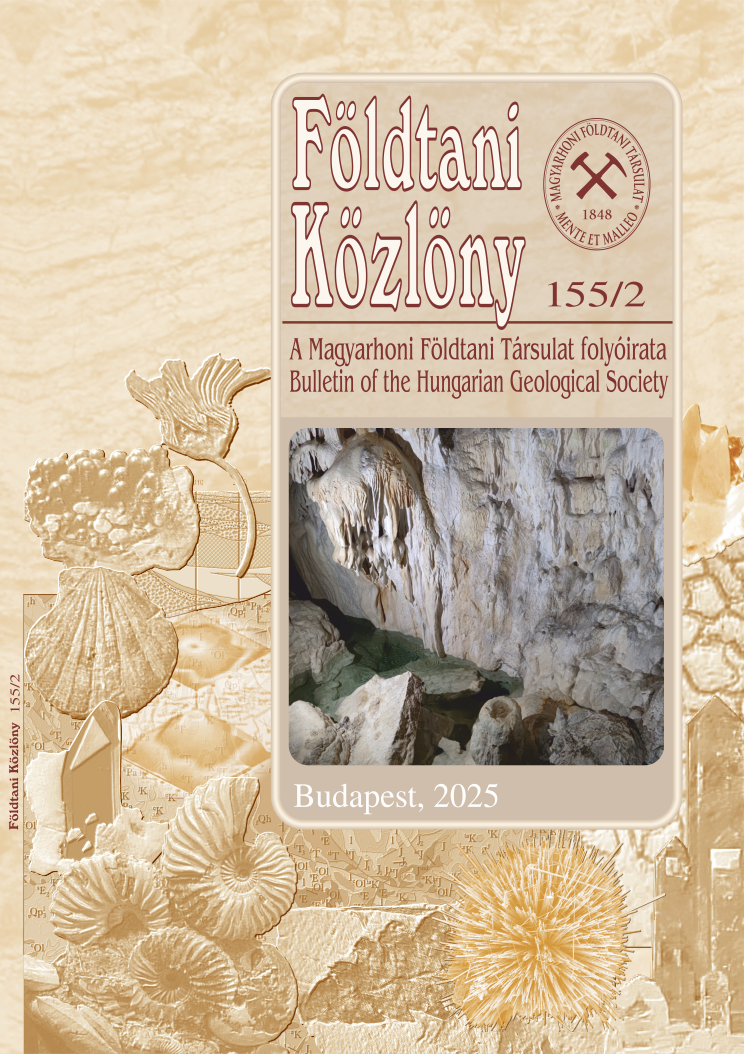Palaeovolcanic reconstruction of the Cser Hill – Ó-Gönc rhyolitic range, Telkibánya, NW Tokaj Mts
Abstract
The textural and geochemical systemizing of domestic acid rock series based on common factors was not completed
within the scope of the raw material exploration and mapping which took place in the 1970’s. The genetic scheme of acid
lavas established during the geological investigation of the Tokaj Mts left many problems unsolved and the principal one
of these is the genetic dismembering and interpretation of the perlite-rhyolite rock association. The latter oftenhas
thicknesses which exceed 100 m. The explanation of the questions required a new volcanological model combining
Hungarian and international scientific experiences. With the relief of this model, facies of the acidic bodies can be easily
placed on the time scale of the eruptions due to their essential textural characters. The palaeovolcanic reconstruction
becomes easier and more precise with the application of this method. One of our study areas is a hilly range on the right
side of the Ósva Valley near Telkibánya in the NW part of the Tokaj-mountains. The diversity of acid lavas and rock facies
have made this territory a classic study area and research has been carried out there for a long time. The rocks were
emplaced mostly after the explosion phase in the Sarmatian age (i.e. Szerencs Rhyolite Tuff Formation, Kishuta, Pálháza
Member). The volcanic cycle tapped a small amount of residue melt and started with a lava flow system (Kőgát), followed
by intensive dome activity (e.g. Cser Hill, Ó-Gönc, Ork Hills). The textural zonality of the bodies was formed as the
resultants of the mechanical stresses during the emplacement, cooling rates, pressure relations and volatile content. Parts
near the surface were chilled and became glass-like due to the fast cooling with the intensive vesiculation and brecciation
of the edges. The textural variety of the rhyolites was formed by the higher temperature which caused devitrification and
groundmass crystallization toward the insides. The morphological differences influenced the heat flux directions and
thus subhorizontal textural zonality was formed at the base of the steep lava domes. The flattened flows had a subvertical
arrangement. The original forms and distinct mechanical stability of the glassy and crystalline facies explain the present
day morphology











